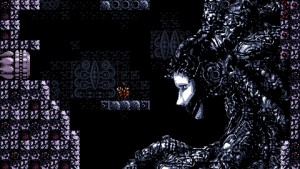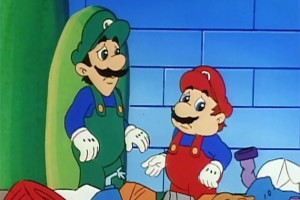Having fun with Bloodborne, dear readers? No? Not a PS4 in the house? That is indeed a shame, I must express. Then how about a nice round of Smash or Mario Kart 8 — I hear Nintendo is actually doing some DLC for both of those titles! No Wii U either? Good gracious, how sad! Yes, the Wii U might be selling globally like a truck of old hot cakes from back when that expression was still used, but I promise the little thing has some good games that make it worth the money.
And yet, the PS4’s exclusives do not seem to be quite the albatross for Sony. Very contrarily, Sony’s big gets have only boosted console sales in a (belated) strategy to strike another blow to the fumbling Xbone. And while it is true that these exclusives would have seen better success individually had they been free to exist on other platforms, the goal is to drive interest away from the competition knowing that the average consumer can only afford one major console. If the tipping point is a console’s exclusives, then Sony has done their homework and played the long-game.
But Nintendo’s is a console with nothing but exclusives, and their console is also a sight more affordable than the competition. With the presence or at least promise of mainstay franchises that have lasted for longer than Sony or Microsoft’s entire presence in the games industry, Nintendo has a machine with more mindshare and more cache with consumers than any other. And yet they let these tremendous advantages, ones Sony or Microsoft would die for, become the going concern for their greater success. When Nintendo did reach renewed success with the Wii, it was not for a better use of their stable of properties, it was for the motion control bubble that got reams of non-gamers interested. When that bubble finally burst, Nintendo was left in an even worse place.
Whereas Sony also went through a dark period with the early days of the PS3 being run roughshod by the 360 (mostly in the US, though it is the largest market) they made up that ground by the end of the generation and unquestionably put themselves in the lead by being the only console maker to unfalteringly transition into the current generation. On the other hand, Nintendo was now left with an anemic fanbase of those not put off by their acid trip into motion controls to the point that reigning in the gimmicks was not quite enough. Now they no longer have the grandmas and soccer moms or as many of their old loyal buyers, and their business practices with outside developers means they will never threaten to gain widespread appeal even just among avid gamers.
Exclusivity is at the heart of both of these issues, in one instance being a tool deftly wielded by Sony to ensure success and in the other instance being a terrible curse that wards off third party development. With their options thinning out, and even their old fallback of handheld sales beginning to wane, Nintendo has re-entered an experimental phase. Where this once meant commissioning more interesting games, this now means diverging their businesses to cover Quality of Life, collectables, and mobile gaming. Some of these new initiatives seem plain odd while others seem downright antithetical to the rest of their business. Had Sony been in this same position, it would have been their instinct to garner more software exclusives — it would have been their desire to look outward for help. Nintendo’s response has been the exact opposite: they have chosen to look inward at what other avenues they can explore at getting their properties into consumer hands.
The mobile push is an attempt to attract people back to the home console sector, or at least they claim, and the collectable amiibo disaster craze is intended as a means to get people interested in their functionality across multiple Wii U and 3DS games. Bereft of any meaningful idea of how to leverage their exclusives, Nintendo has opted to snatch wildly at strange ideas in the hopes that one of them sticks. The release of amiibo might be a collector-fad at the moment, but it reeks of poor appraisal of demand and there seems to be little interest in amiibo functionality in games which makes their use as a ramp to game purchases look unlikely. Nintendo would rather do anything, it seems, in place of picking up a phone and repairing or beignning some relationships with third party developers. The process of doing so would inform the creation of their new hardware and make them less likely to release a rubics cube that only Nintendo confidently knows how to operate. They have all of the same ingredients that Sony has used to get to where they are now with the PS4, they only need to prepare them correctly.
In a day where exclusivity is considered dead for the great cost of game production, Sony still manages to get it to work for them. Even when they release a dud like The Order: 1886, the impact is kept to a minimum since Sony’s machine also has access to much of the competition’s library. When Nintendo drops an egg on something like Bayonetta 2 or The Wonderful 101, the results are a bit more biting I would presume. Those games are charged with filling a section on the release schedule, and without their performance Nintendo’s console only looks the worse for wear.
The climate for exclusivity has changed only as much as the console race has changed, but the practice remains a useful tool. If Sony can keep a few good Spring and Holiday releases from the competition, and if Nintendo can ever get Mario to work for them instead of against them, it will be for exclusivity that both companies prosper. PC gaming and the Xbone have been benefiting from a looser grip on third party developers, and perhaps much of that ground can no longer be gotten back, but it is not all gone.


